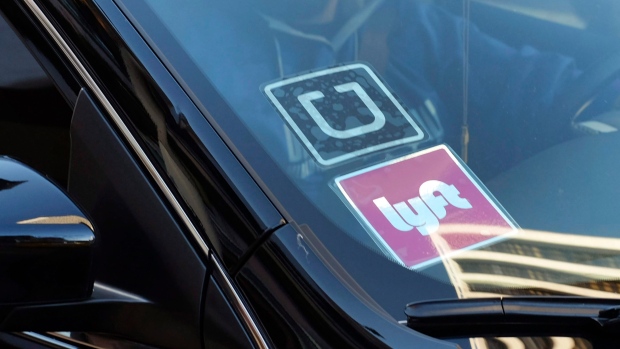Sep 14, 2018
Canadians seeking out discounts as Uber, Lyft battle for ride-hailing supremacy

Uber Technologies Inc. has for years dominated the Canadian ride hailing market, but in the past nine months that has changed with rival Lyft Inc. entering the scene – sparking a pricing battle and competition to differentiate service offerings between the two companies.
The rivalry comes as Uber plans to forge ahead with an initial public offering in the second half of 2019, and invest $200 million in Toronto to develop a new engineering hub and expand its self-driving vehicle centre in the city. Lyft is also said to be aiming to list on public markets in 2019, according to a Bloomberg report.
Some customers in Toronto – where Lyft has been operating since December 2017 – say the rivalry has allowed them to play off each service in recent months, and see which offers a cheaper ride.
"I have both [Uber and Lyft] apps so I can gauge which service offers the lower costs for a particular trip," said Miguel Bolivar, a Toronto resident who works in finance, in an interview with BNN Bloomberg. "Currently I don't have a particular preference."
That may be because Lyft and Uber’s services are essentially indistinguishable, according to Sunil Johal, policy director with the University of Toronto’s Mowat Centre.
"There's little difference in the services offered by Uber and Lyft," said Johal. "They both use smartphones to connect riders with drivers, allow for pooled rides and have roughly the same price point."
Lyft is currently licensed in nine Canadian cities – including Toronto and Ottawa – all of which are located in Ontario. Meanwhile, Uber has a presence in 15 Canadian cities across the country according to its website, including Calgary, Montreal and Toronto.
Within the first five months of Lyft’s tenure in Toronto, the company said it added 10,000 drivers to its network – about a third of Uber’s active drivers – and that approximately 50,000 users in Toronto had downloaded the app, according to a Bloomberg report in May. An Uber spokesperson also told Bloomberg 1.5 million Canadians use its service at least once a month and that it has 830,000 monthly riders in Toronto alone.
So far, Lyft and Uber have typically matched each other’s promotions in the markets where both companies compete in recent months. When one offers a promotion for new drivers, it's met by the other. And when one offers a deal for potential passengers, the competitor has typically matched the offer.
"Ever since Lyft joined the fray in the Canadian market I have noticed both apps have started to offer discounts," Bolivar said. "These discounts were not available when Uber was the sole ride-share business since they had no incentive.”
In Toronto, Lyft has also been working with major events to promote its service, offering discount codes during the Pride Parade and Toronto International Film Festival. The company also initially offered new users $10 toward journeys to or from the Canadian National Exhibition in August, but cancelled the promotion after facing backlash from locked out union workers.
Another consumer told BNN Bloomberg that the discounts have been so substantial that he has even chosen to order a ride from Uber or Lyft rather than walk.
"Even if it is only a 50 cent difference I will pick the cheaper service," Toronto resident Ryan Holman, who works in the insurance industry, said. "I don't have a preference with service, but I like to check and see if there are any promotional offers. Uber sends me a $5 off promotion from time to time so I always look to see if there are any deals available."
The pricing pressure may be one of several red flags for investors if Uber and Lyft list on public markets in the future.
"The big question is how much longer investors in the ride-hailing space are willing to see these companies operate with no clear path to profitability,” Johal added. “At the moment it appears Uber will continue to be the dominant player in the sector, barring any more corporate missteps or scandals, with Lyft trying hard to catch up."




